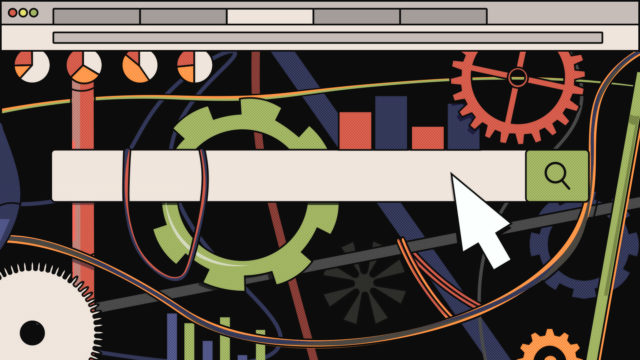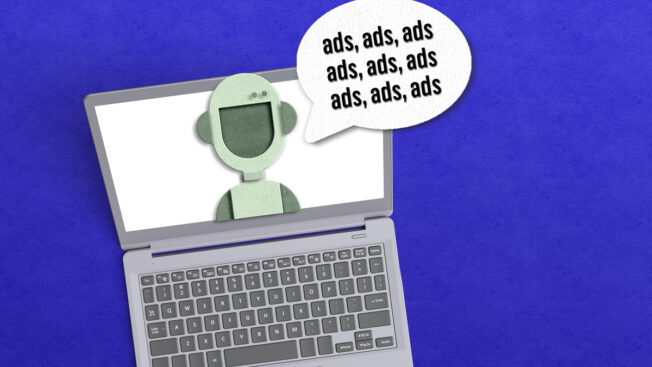How AI-Enabled Search Will Affect Publishers’ Affiliate Businesses
Business transformation begins with a clear data collaboration strategy. Learn new strategies and best practices from leading consumer-facing brands in LiveRamp’s new ebook.
Publishers have recently feared the impact that artificial intelligence (AI)-enabled search will have on their advertising revenue.
If Google’s Bard or Microsoft’s Bing can answer a search query without directing a user to an article, publishers’ bottom lines will suffer. And those tools have exploded in popularity, with ChatGPT attracting 1.6 billion visits to its domain in March, per Similarweb data. Bing had 957 million while Bard drew 30.6 million visits.
But many publishers also rely on search traffic to fuel another core component of their business—affiliate marketing.
In recent years, publishers including The New York Times, The Wall Street Journal, Vox Media, Vice Media, Hearst, Condé Nast, Future plc., Dotdash Meredith and others have increased their product-recommendation divisions, which generate revenue when a user clicks through an affiliate link and makes a purchase.
While the impact on affiliate revenue will be less severe than on general search traffic, experts believe that AI-enabled search will increase competition by reducing the surface area of search-results pages, as well as heightening the value of first-party data and creating demand for a new field of SEO expertise.
“Affiliate sits between user intent and user action,” said Troy Young, media analyst and former president of Hearst Media. “If the space between query and SKU gets disrupted, then some of that business gets disrupted.”
The difference between shopping and asking questions
People using search to shop have a fundamentally different goal than those looking to find answers to questions, said J.C. Gombeaud, senior vice president of marketing at Skimlinks.
While an AI-generated answer will satisfy the needs of a query, shoppers rarely make a decision based on one data point. This difference separates the two processes, and it shields affiliate marketing from the upheaval that faces search.
“What we see from the traffic is that people want choice,” Gombeaud said. “There is not one best TV. There is one best TV for their specific set of criteria and taste.”
Many publisher affiliate programs also rely on real-world product testing to bring objectivity to their reviews, with some programs using labs and test kitchens to physically test products.
Even if AI-enabled search can crawl these pages and surface their results, the technology can’t test the products themselves, which entrenches the value of these affiliate divisions.
“Some of the blocking and tackling might change,” said Chris Lloyd, vice president and general manager of Reviewed, Gannett’s affiliate arm. “But the search engines will still surface results focusing on EAT: expertise, authority and trustworthiness.”
Publishers also expressed optimism about some of the ways in which technologies like ChatGPT could make their operations more efficient, particularly with processes like A/B-testing headlines and gathering research.
Shrinking the surface area
While AI-enabled search can’t currently replace the product-testing function of publishers, it will likely affect the topography of search engine results pages (SERPs).
Google has already begun devoting larger sections of its SERPs to in-house products like Google Shopping, and its chat box results will only further the trend, eating into valuable real estate, said Lloyd.
As a result, if publishers once needed to surface on the first page of Google, they might now need to appear in the first few results.
Likewise, shoppers are unlikely to purchase a product simply because AI-enabled search suggests it, but that could change given the price of the item or the urgency of the purchase. That could shrink the size of the affiliate market and pinch publishers even further.
The science of SEO will evolve
The need to optimize content for AI-enabled search will create a new breed of SEO, according to Young, and the publishers who master this science will reap the benefits.
“On Google, small changes that push you up or down the page affect your business materially,” Young said. “This is the equivalent of that squared.”
Publishers can also invest in channels like newsletters and text messaging that let them serve affiliate content to users without the interference of an algorithm.
These channels also let publishers collect first-party data and clearer information about peoples’ purchasing behavior, which will only become more critical as the process of content creation itself becomes commoditized.
“Everyone is trying to understand what AI will change,” said Bryce Widelitz, vice president of publisher innovation at Impact. “It won’t change how you buy things, but it will change what the research process looks like.”
https://www.adweek.com/media/how-ai-enabled-search-will-affect-publishers-affiliate-businesses/

